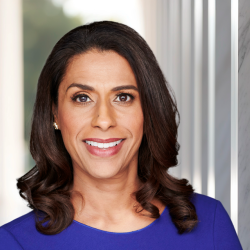Congress is back in session this month and facing several decisions and deadlines that could impact your work—and bring the government to a standstill. With federal funding set to expire at the end of September, plus must-pass defense and agriculture legislation that’s causing fights across the aisle and within both parties, we could be in for a wild ride. Join us to hear from the Council's external lobbyists, Ken Kies and Arshi Siddiqui, about what’s happening on Capitol Hill and how it might impact the policies and causes you care about.
Webinar
Join this webinar to learn about trends and pending legislation in Congress that may impact your philanthropic grantmaking.
Gifts per capita is calculated by dividing the foundation’s total gifts (including supporting organizations) by the population of the foundation’s service area. The service area is defined by each community foundation.
Total transactions represent the number of gifts and grants processed annually (including supporting organizations). The average transaction size represents the total dollar value of gifts plus the total dollar value of grants divided by the total number of transactions.
The distribution rate is calculated by dividing the foundation’s total grants by total assets (including supporting organizations) at the end of the foundation’s fiscal year. The percentage of total assets in donor-advised funds (Percent Total Assets DAF) is the total amount of IRS-classified donor-advised funds divided by total foundation assets.
The following is a list of Annual Survey participants sorted by asset size, supplemented by publicly available information where available.
Staffing expenses typically make up around two-thirds of overall community foundation expenses, regardless of foundation size.
Averages were used to total 100%. (n=238)
#chart-wrapper-17085 g.highcharts-axis-labels.highcharts-yaxis-labels {
display: none;
}
#chart-wrapper-17085 text.highcharts-axis-title {
display: none;
}
A smaller portion of community foundations were seen to generate surplus revenue in 2016 than the 48% of respondents who did so in 2015. The amount of community foundations who essentially broke even rose over 10% from 2015. Gaps between revenues and expenses are typically covered by unrestricted funds, though this has an effect on the flexibility of a community foundation's operating model.
In general, economies of scale allow for community foundations to achieve relatively lower expense-to-asset ratios, though such a metric is heavily dependent on the operating model of the individual foundation. As those in the field move beyond simply being a grantmaker, we often see a fluctuation in this metric due to the need for individual community foundations to subsidize activities such as community leadership. (n=238)
The presence of specialized staff at larger community foundations, who generally possess relatively complex operating models, is reflected in the management of fewer funds per FTE. (n=198)
While the basic community foundation operating model is supported mainly by administrative fees on funds, differences in the revenue mix do emerge among foundations of different sizes. Emerging and smaller community foundations rely more heavily on outside fundraising and distributions from endowments/reserves to support operations. The continued diversification of community foundation offerings has not, to this point, led to a significant shift in one's typical revenue mix.

